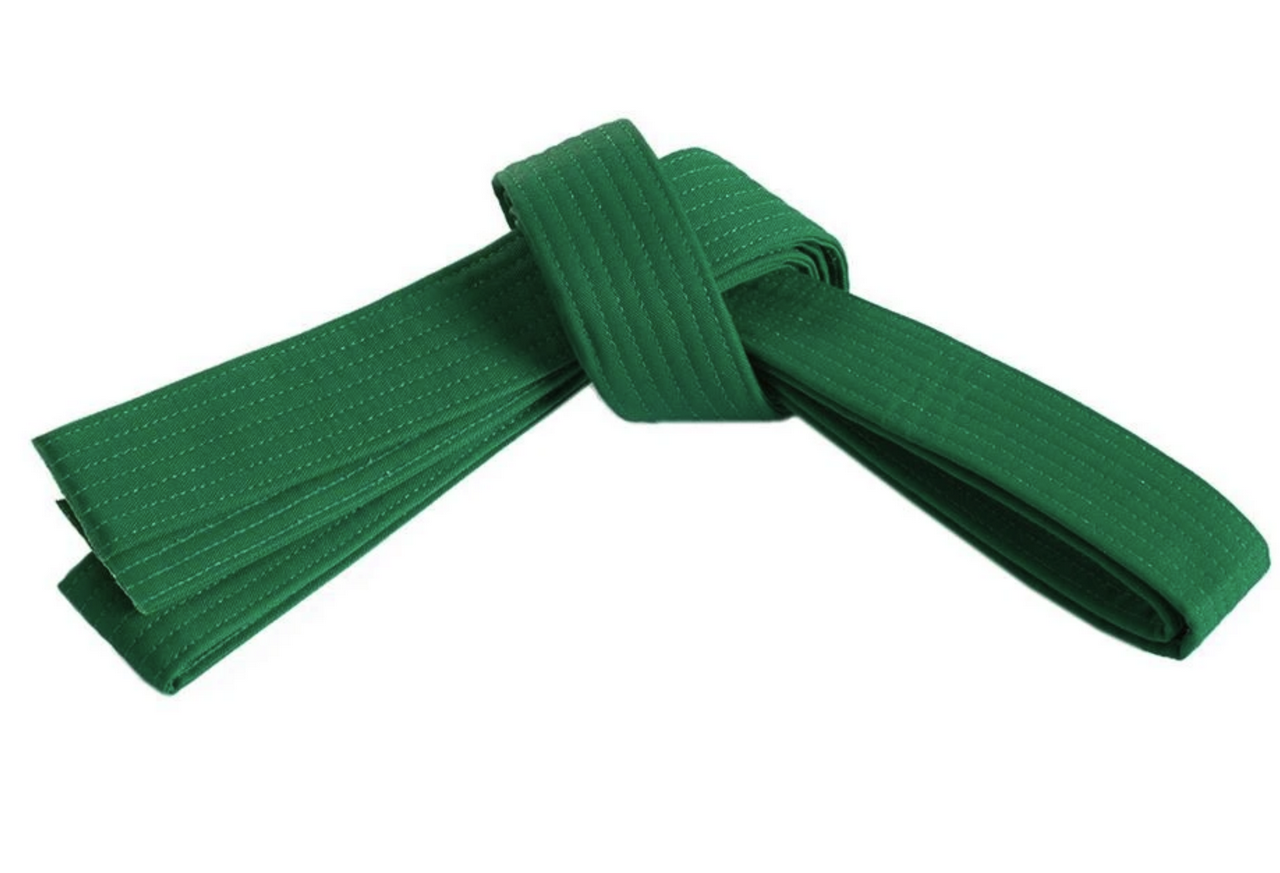Karate: Green Belt!

I've now reached Green Belt!
Aaron’s Journey Into Martial Arts

I've now reached Green Belt!
The Back Ridge Hand, known in Japanese as Haito Uchi (背刀打ち), is an open-hand striking technique in karate. “Haito” (背刀) literally means “back sword” or “ridge hand,” referring to the striking surface, which is the inner edge of the hand from the base of the index finger to the wrist, along the side of the thumb. “Uchi” (打ち) means strike or hit.
This technique is distinct from the knife hand (Shuto Uchi), which uses the outer edge of the hand. Haito Uchi generates power through a whipping or snapping motion, often targeting vulnerable areas. It can be delivered in various directions (straight, circular, downward) depending on the specific application. Its primary uses include: * Targeting Soft Tissue: Effective against areas like the side of the neck, temple, jaw, or groin. * Close-Range Striking: Can be used effectively in close quarters where a full punch might be difficult to execute. * Deception and Flow: The open-hand nature can sometimes be less telegraphed than a clenched fist, and it can flow well into grappling or trapping techniques. * Joint Manipulation: In some applications, it can be used to strike or manipulate joints.
The Hook Punch, known in Japanese as Kake-zuki (掛け突き) or sometimes Mawashi-zuki (回し突き), is a powerful and versatile hand technique in karate. “Kake” (掛け) implies “hooking” or “hanging,” referring to the arc of the punch, while “Zuki” (突き) means punch or thrust. “Mawashi” (回し) means “roundhouse” or “circular.” Both terms describe the circular trajectory of the strike.
The Hook Punch is a close-range power punch delivered with a bent arm, designed to strike an opponent from the side. It leverages rotational force from the hips and torso to generate significant impact. Its primary uses include:
The Jab, known in Japanese as Kizami-zuki (刻み突き), is one of the most fundamental and frequently used techniques in karate. “Kizami” (刻み) means “engraving” or “mincing,” implying a quick, sharp, and often repeated action, while “Zuki” (突き) means punch or thrust. This translates to a “Minced Punch” or “Engraving Punch,” accurately reflecting its quick, probing nature.
The Kizami-zuki is a lead-hand punch, meaning it's thrown with the front hand from your fighting stance. It's typically a fast, snapping punch, less focused on raw power and more on speed, precision, and disruption. Its primary uses include:
The Spinning Backfist, known in Japanese as Ushiro Uraken Uchi (後ろ裏拳打ち), is a dynamic and surprising hand technique in karate. Breaking down its name, “Ushiro” (後ろ) means back or rear, indicating the spinning motion; “Uraken” (裏拳) means backfist (striking with the back of the clenched fist); and “Uchi” (打ち) means strike or hit. This translates directly to a “Rear Backfist Strike.”
This technique generates considerable power through a rapid body rotation, allowing the practitioner to strike with the back of the fist from an unexpected angle. It's often used to exploit openings created by an opponent's movement or to deliver a quick, jarring blow to the head or face. Its deceptive entry makes it a valuable tool for surprising an opponent and can be effective for creating distance or setting up further attacks.
The Spinning Roundhouse Kick, is similar to the Spinning Hook Kick / Ushiro Mawashi Geri but instead of a hook kick at the end its a roundhouse. This particular kick I couldn't find an exact Japanese name for.
This kick I would consider a bit of a fake out. It looks like you are coming around to throw a hook kick but instead you throw a roundhouse.
The Crescent Kick, known in Japanese as Mikazuki Geri (三日月蹴り), is a distinctive and versatile technique in karate. “Mikazuki” (三日月) translates to “crescent moon,” aptly describing the curved path of the kick, and “Geri” (蹴り) means kick.
This kick is characterized by a sweeping, arc-like motion, often striking with the sole or ball of the foot. It's less about raw power in a direct impact and more about disruption, clearing an opponent's guard, or setting up other techniques. Crescent kicks can be delivered from the inside-out (Uchi Mikazuki Geri) or outside-in (Soto Mikazuki Geri), making them adaptable for various situations, including breaking an opponent's balance or striking vulnerable targets like the head or collarbone from an unexpected angle.
The Spinning Hook Kick, known in Japanese as Ushiro Ura Mawashi Geri (後ろ裏回し蹴り), is a highly effective and dynamic technique in karate, often used for its power and deceptive nature. Let's break down its Japanese name: “Ushiro” (後ろ) means back or rear, indicating the initial turning motion; “Ura” (裏) means reverse or inside, referring to the inward hooking arc of the kick; and “Mawashi” (回し) means roundhouse or circular, while “Geri” (蹴り) means kick. This translates to a “Rear Reverse Roundhouse Kick” or “Spinning Hook Kick.”
This kick generates immense power by combining the momentum of a full body spin with the snapping force of a hook kick. It's particularly effective for striking opponents from an unexpected angle, often targeting the head or side of the body. Its spinning entry makes it difficult for an opponent to track, allowing for a sudden and impactful strike.
The Jump Front Kick, known in Japanese as Mae Tobi Geri (前飛び蹴り), is one of the most dynamic and visually impressive techniques in karate. Breaking down its name, “Mae” (前) means front, “Tobi” (飛び) means jump or flying, and “Geri” (蹴り) means kick. This translates directly to a “Front Jumping Kick.”
More than just a flashy move, the Mae Tobi Geri is a powerful technique that leverages vertical momentum to deliver a forceful front kick while airborne. It's often seen in demonstrations and competition due to its ability to cover distance quickly and strike from an unexpected angle, making it difficult for an opponent to anticipate. It can be particularly effective for attacking higher targets or for closing distance rapidly.

I've now reached Orange Belt! On to Green!